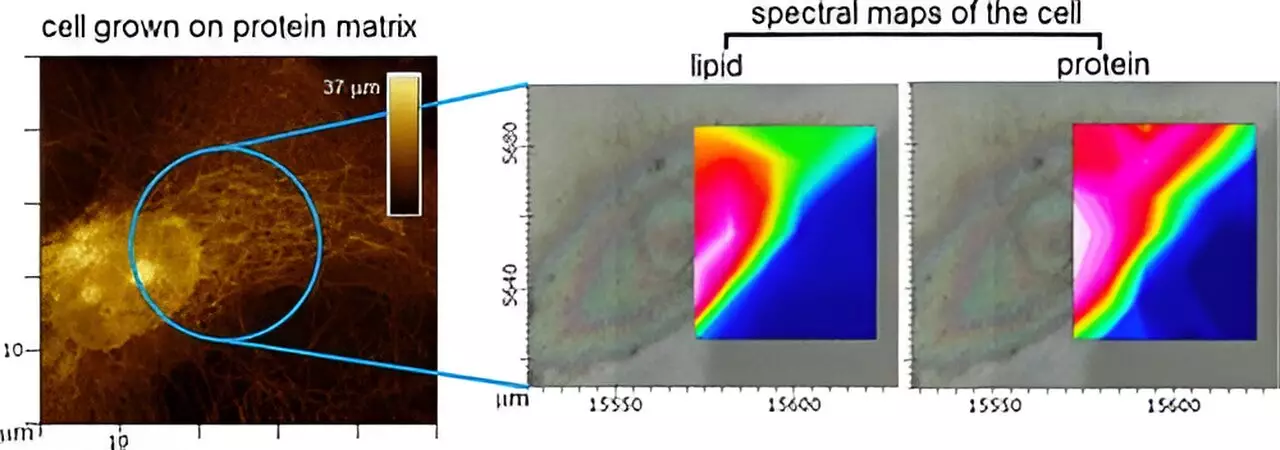Understanding how the chemistry of human cells changes in response to their extracellular environment is crucial for developing effective cell-based diagnostics and therapies. A recent study conducted by scientists at NPL in collaboration with Diamond Light Source sheds light on the significance of extracellular matrices on cell responses and development pathways.
The research, published in ACS Applied Materials & Interfaces, emphasizes the role of extracellular matrices in guiding the specialization of stem cells into primary cells that form tissues and organs. By analyzing InfraRed maps of human primary and stem cells grown on both native and synthetic matrices, the scientists were able to gain valuable insights into how the chemical composition of cells is influenced by their environment.
One of the key challenges faced by the researchers was the inability of InfraRed spectroscopy to differentiate between cells and their matrices. To overcome this limitation, a correlative approach combining physical imaging techniques such as light and atomic force microscopy was implemented. This approach allowed the scientists to obtain chemical maps of single cells and compare their chemistry signatures in response to matrices with varying physical properties.
The success of the study was attributed to the collaborative efforts of scientists from NPL, Diamond Light Source, Sheffield, and London Colleges, as well as data experts from Cambridge. By pooling their expertise, the team was able to develop a spectral imaging approach that provided valuable insights into how cells interact with their extracellular environment.
The findings of the study have significant implications for health care and technology innovation. By gaining a better understanding of how cell chemistry is influenced by extracellular matrices, researchers can develop more effective strategies for tissue growth and repair. The study also highlights the need for advanced methodologies to measure cell-matrix interfaces in three dimensions, paving the way for advancements in human tissue regeneration.
The study conducted by scientists at NPL and Diamond Light Source underscores the importance of extracellular matrices in shaping the chemistry of human cells. By leveraging innovative imaging techniques and collaborative efforts, the researchers were able to gain valuable insights into the complex interplay between cells and their environment. Moving forward, further research in this area has the potential to revolutionize cell-based diagnostics and therapies for the benefit of healthcare and technology innovation.


Leave a Reply